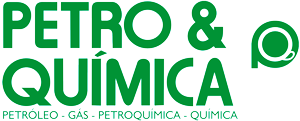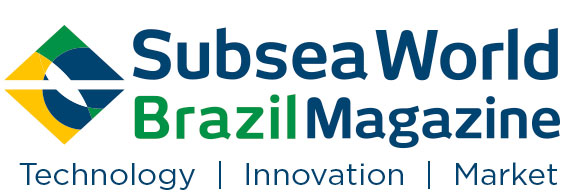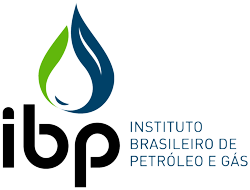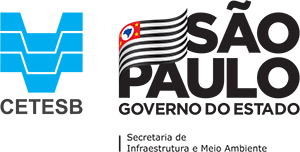Notícias
Barotrauma and overdistension are related to undesirable pressures in the airways and in the lungs. It might be responsible for morbidity and mortality. The coronavirus pandemic has mobilised several groups to provide effective solutions that can help in the fight and treatment of patients infected by the virus, especially in those who develop severe acute respiratory syndrome (SARS). In the current research, we investigated the coupled effect of endotracheal tubes (ETT) and typical operational conditions of mechanical ventilators. The model is built from computerised tomography images of a 60 years adult male. Numerical simulations are performed employing computational fluid dynamics. The effect of the two turbulence models is also discussed on the basis of the pressure field and the velocity field in various branches of the airways. We also show that the average pressure can be estimated using a simple expression that relates the pressure with the volumetric flow rate. The constant of the model is based on the CFD findings and it can be used for screening purposes in emergency rooms prior to initiating the mechanical ventilation.
Due to potential damage from accidents for human and economic, gas leaks are a major issue in industrial sites. Real-time detection of leakage scenarios wants to promote repair work, which helps to prevent gas explosions caused by accidental releases and ensures safety in chemical process plants. Long-short term memory recurrent neural networks (LSTM-RNN) were trained and tested in this work to identify the source of methane leakage in a FPSO module (Floating Production Storage and Offloading) as a function of wind speed, wind direction, and gas concentration data. The datasets for training were generated using 3D-CFD simulations, and the authors take advantage of changing the time length of the input variables. The LSTM-RNN models were trained with data from the CFD dispersion simulated on FLACS (FLame ACceleration Simulator), with different time step values used to assess their significance for prediction accuracy on unseen data. Authors investigate four leakage locations, four wind speeds, and eight wind directions in addition to the no-leakage scenario for the same wind speeds and directions. The results revealed a gradual enhancement in the performance of the models with higher time step values, as well as a strong lead of the ability of the model to correctly predict the leakage source using variables that are effortlessly monitorable.
Oil and gas refineries involve handling and storing hazardous materials, and the uncontrollable release of these substances may lead to catastrophic accidents. In this context, risk studies are aimed at recommending either preventive measures to avoid the undesired events or designing safeguards to mitigate the consequences in case an accident happens. To that end, risk experts postulate possible leakages, then identify their causes and consequences, and finally evaluate and classify the risks into categories. These analyses rely on examination of a variety of engineering textual documents and attendance to numerous meetings, which is very labor, time consuming, especially for oil refineries that are equipment intensive facilities. Moreover, this qualitative process usually characterizes the first steps to perform a quantitative risk analysis (QRA) and is crucial to ensure its quality. Therefore, we here propose to use text mining and fine-tuned trained bidirectional encoder representations from transformers (BERT) models for reducing some tasks, which are involved in the early stages of QRA. These techniques can be applied to extract, organise, and classify information from past textual risk studies, and then allow for recognizing patterns. Our idea is to identify the potential consequences of accidents related to the operation of an oil refinery and classify each scenario in terms of severity of the consequence and likelihood of occurrence. Thus, we expect to reduce the efforts required for completing the early stages of a QRA. The proposed method was applied to an actual oil refinery and presented very promising results. The models resulting from this research were embedded into an app, HALO (hazard analysis based on language processing for oil refineries), which is available online.
A Anglo American é uma empresa global de mineração que possui duas unidadades de negócio Níquel e Minério de Ferro, no Brasil. Com o objetivo de garantir a sua meta de zero dano, criamos o programa de Gerenciamento de Riscos Operacionais (ORM) para a indentificar, avaliar e gerenciar todos os perigos/riscos, aspectos/impactos e oportunidades das nossas operações.
Este programa é estruturado em quatro camadas inter-relacionadas: 1) Entendimento dos eventos indesejados prioritários (PUE’s) que são obtidos através da análise e avaliação de riscos de toda a unidade; 2) Foco em um tema específico através da metodologia bow-tie, que identifica causas, consequências e controle associados a esse evento indesejado; 3) Gerenciamento de risco da tarefa e; 4) Gerenciamento de riscos individuais contínuo, ou seja abrange funções do nível de liderança ao operador, para que controles de risco eficazes sejam identificados e exercidos em em todas camadas.
Implementado recentemente o Modelo Operacional (OM), que possui os seus três pilares correlacionados com o ORM, sendo esta correlação: 1) Camadas 1 e 2 do ORM com o seu pilar do Planejamento Operacional ; O perfil priorizado dos eventos indesejados e seus respectivos bow-ties compõem a estratégia da empresa para a tomada de decisões de orçamentos do tipo (OPEX e CAPEX; 2) Camada 3 do ORM com o seu pilar da Gestão do Trabalho; O trabalho está planejado para garantir que as pessoas estejam preparadas para realizar a tarefa (métodos, equipamentos, ambiente e competência corretos); e 3) Camada 4 com o seu pilar Feedback; A condução do Gerenciamento de riscos contínuo para execução do trabalho.
Com o foco na 3° camada do ORM e com o pilar da Gestão do Trabalho, ocorreu o processo de priorização das tarefas através de um inventário de atividades críticas, das tarefas que possuíam maior número de PUE´s para as com menor. E para isto foram elaboradas as ferramentas de Análise de Risco da Tarefa (ART) – com intuito de identificar os recursos necessários, capacitações e condições de risco relacionadas a tarefa a ser executada e do Documento de Execução do Trabalho (WED) que é um checklist conciso baseado nos controles identificados na ART para que os operadores, o preencham antes e durante a atividade, para controlar as condições perigosas relacionadas a tarefa em execução.
Os times globais de ORM e OM desenvolveram uma ferramenta que possibilita a captura das informações oriundas das ferramentas de análise de risco ART e o WED, respectivamente 3° e 4° camadas do ORM, com o intuito de condensar estas informações em um relatório disponível nas plataformas do PowerBI/Tableau. Este relatório traz informações relacionadas as condições perigosas avaliadas pelos executores das atividades e as transforma em relatórios gráficos que auxiliam os gestores em suas tomadas de decisão para que possam: revisar a ART e WED ou treinar a equipe baseada nas informações disponíveis.
O objetivo desse trabalho é apresentar o funcionamento desta ferramenta e compartilhar lições aprendidas nesse processo através de dois estudos de caso das unidades de Níquel e Minério de Ferro.
Almost all O&G companies have a well integrity management system based on a well failure model. Until now they are mostly based on qualitative risk models with only very few claiming to use quantitative risk methods. The objective of this paper is to present a production well integrity system based on a different type of quantitative risk model. Traditional risk assessment methods were developed to be used in the design stage (when you can only conjecture about what will actually happen to the asset). Therefore, they are not really adequate to manage operational risks during the production phase because they cannot take into account the operational history and the true current asset conditions. Unlike such models, our quantitative risk/reliability model has been developed to be specifically used during the operational phase of a well.
A unique time-dependent “in-time” reliability model was developed to solve the problem from an operational viewpoint. The basic indicator of the risk of loss of well integrity is the instantaneous frequency of an uncontrolled leak but it also calculates the cumulative risk of failure with time. It properly controls the age of all barrier elements and considers all past operational events that are relevant to describe the current conditions of each barrier element; it uses this information to calculate the current risk. The future evolution of risk is then calculated based on current conditions of barrier elements, their scheduled tests, and existing well monitoring capabilities.
Through a two-control-line risk management and a criterion for incremental cumulative risk of uncontrolled leak (a concept borrowed/adapted from the nuclear sector), the results provide objective guidance for key operational decisions, such as the continuation of operation with a failed barrier element by calculating the number of days until the well risk reaches the unacceptable risk line or the incremental cumulative risk limit. The system gives correct answers to questions such as: what is the risk of loss of integrity now/today under the past operational history and current conditions of the well? What is the safety impact of a detected failure of a barrier element on the current and future well risk? Is it safe to continue to operate with a degraded safety barrier element? For how long?
The main novelties of this paper are: development of a truly operational quantitative risk/reliability method and its application to well integrity decision support; it allows real-time, dynamic calculations; it uses time-varying failure rates, allowing for ageing effects of barrier elements; it can take into account both repair (good-as-old) and replacement (good-as-new) maintenance strategies; it evaluates the effects of different testing policies for whole groups of tested barrier elements on the risk of loss of integrity; it assesses the mean remaining time to a heavy or a light workover, thus providing significant planning support to upcoming interventions. It is an entirely new concept and a first in the world application.
O período da Revolução Industrial, iniciado no século XVIII, foi responsável pela transformação da sociedade em uma escala mundial e até o século XX, grande parte dos países já percebia o aumento do número de fábricas em seus territórios. Este aumento de indústrias, trouxe consigo, além de produtos manufaturados, desenvolvimento tecnológico e geração de empregos, uma perspectiva de riscos ligados à atividade fabril, em razão do grande número de acidentes que aconteceram, ao exemplo dos de Bhopal – Índia (1984) e de Chernobyl – Ucrânia (1986) que ocasionaram mortes, e prejuízos financeiros e ambientais. Foi a partir desses fatores, que o estudo de segurança de processos químicos tornou-se mais intenso e aprofundado em países como Estados Unidos e Inglaterra, que passaram a documentar tais fatos com a finalidade de prevenção e aprendizado com os sinistros.
Este trabalho foi escrito com o objetivo de discutir o nível de acesso à informação no Brasil sobre segurança de processos químicos, sob a hipótese de que os profissionais ligados à indústria não chegam preparados aos seus cargos e possuem dificuldade de aprofundar o tema, devido a um problema na coleta e disponibilização de dados estatísticos e documentais sobre o assunto. Sendo essa ausência de informação responsável pela dificuldade no correto mapeamento e prevenção de sinistros e pela falta de análise adequada sobre prejuízos financeiros, ambientais e sociais causados por um acidente de processos químicos.
Assim, a fim de desenvolver a temática foi feita uma discussão sobre os acidentes industriais internacionais e nacionais, um comparativo entre a realidade brasileira e americana e uma pesquisa do tipo exploratória com profissionais da área industrial e estudiosos do tema de segurança de processos químicos.
Com os resultados obtidos, foi possível identificar que o país, apesar de ter mais de um quinto de seu PIB alocado na indústria, não possui ainda materiais suficientes sobre segurança de processos químicos disponibilizados de maneira adequada e organizada, nem a existência de uma entidade responsável por compilar os dados estatísticos e/ou estudos de casos sobre acidentes industriais brasileiros, dificultando assim o acesso ao tema tanto por estudiosos e profissionais da área bem como para a população leiga.
During construction operations, two barrier envelopes – consisting of several well barrier elements – are the main wells mechanisms to prevent accidents of usually catastrophic proportions. The primary barrier envelope is concerned with preventing the occurrence of a kick, while the secondary barrier envelope aims to avoid a scenario in which the kick evolves to a blowout. Therefore, evaluating the quality of these barrier elements and the relationship among them – and, consequently, of the envelopes formed – is fundamental to guarantee well safety during well construction. Before the well is built, an important prior step is well design; here, everything in terms of equipment and sequence of operations will be selected to achieve the desired goal and deliver the well to production. In this work, we present a methodology to evaluate the safety of a selected well design, considering the particularities of the well and the drilling rig. We focus only on drilling operations. The barrier envelopes are mapped using the graphs technique, while the barrier elements’ quality is measured through their reliabilities obtained from expert judgment. The reliability of each barrier envelope is calculated considering the individual barrier element reliabilities and how they compose to form the envelopes. Then, an operational sequence is selected, and a score is given to each operation by considering which envelopes are present and if any barrier elements have been deactivated. This score is dubbed “barrier envelope integrity index”. This methodology is implemented using commercial software, creating a prototype tool. An example using the prototype is then showcased.
A gestão de risco vem ganhando cada vez mais espaço nas empresas. Os impactos financeiros e humanos advindos da ausência ou má estruturação de políticas e ações para prevenção de risco são cada vez mais constatados. Além disso, perdas econômicas para organizações e Estados em decorrência de afastamentos e mortes são consideráveis. A indústria química é um setor com riscos elevados, deste modo se apresenta com problema de pesquisa para o melhor entendimento das práticas e oportunidades para avaliação da gestão de riscos. Deste modo, este tudo se propõe a aplicar metodologias de avaliação de risco numa indústria química de modo a mitigar os perigos inerentes ao processo e suas consequências. Para tal foram realizadas pesquisas bibliográficas exploratórias no intuito de se levantar o “estado da arte” do tema proposto, para a identificação do “estado da prática” procedeu-se o estudo de caso com dados de processo. Os resultados apontam a necessidade do desenvolvimento de ferramentas que permitam o mapeamento dos riscos e sejam interativos. Outro ponto importante é a ausência de ferramentas similares, mostrando a importância da formalização participava e disseminação de política de gestão de riscos, bem como programas e ações sistêmicas com este foco. Os dados apresentam a importância da gestão, visto que a avaliação apontou riscos altos na operação, possibilitando recomendações ao processo.
Oil spills are one of the most dangerous events that can be encountered in coastal environments. The detection of oil spills in the early stages can refrain its scattering and prevent more significant environmental and economic disasters/impacts. A risk analysis framework can be devised for preventing, detecting, and correcting this problem. In this work, we contribute with a method to be used in the detection stage: a new computer vision-based (CV-B) approach to identify this type of phenomenon in Synthetic Aperture Radar (SAR) images. The proposed CV-B technique uses the q-Exponential distribution-related functions in the feature extraction process, transforming the input images into feature vectors. These vectors will be used as input to feed the following classification machine learning methods: Multilayer Perceptron (MLP), Random Forest (RF), Support Vector Machine (SVM), Logistic Regression (LR), Extreme Gradient Boosting (XGBoost), and Convolutional Neural Network (CNN). We applied the q-Exponential-CV-B method combined with the ML methods in a publicly available dataset with 1112 SAR images for validation purposes and compared the results with traditional computer vision (CV) techniques. The proposed approach outperformed the results achieved by the classical CV methods.













